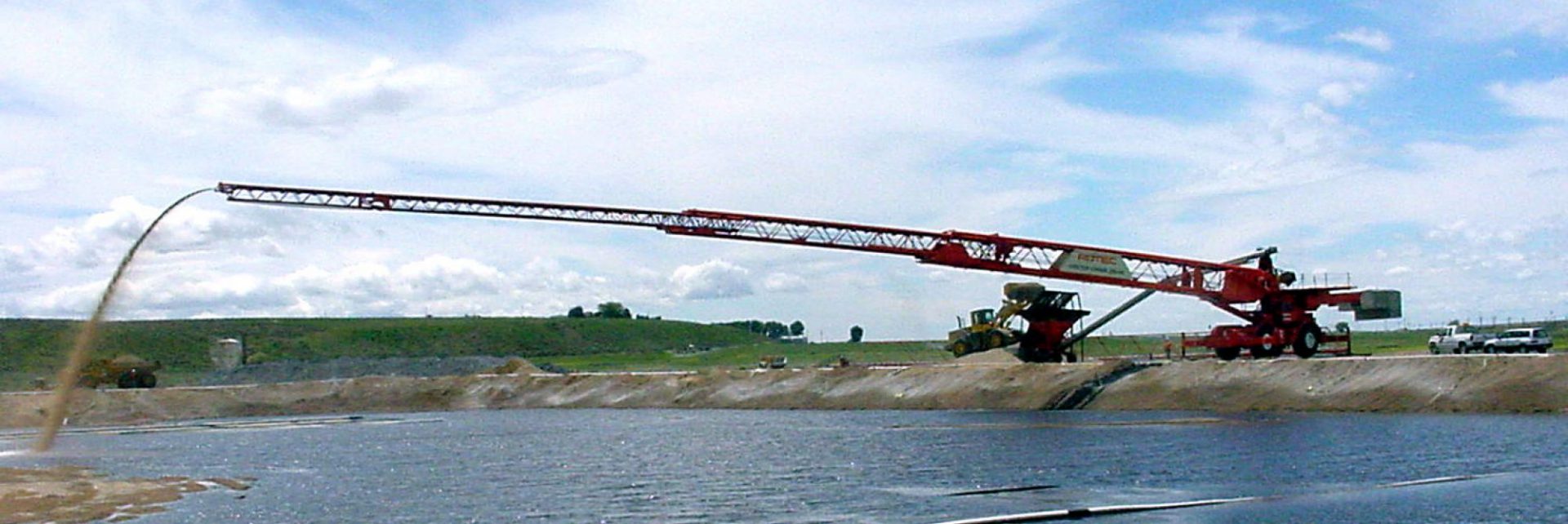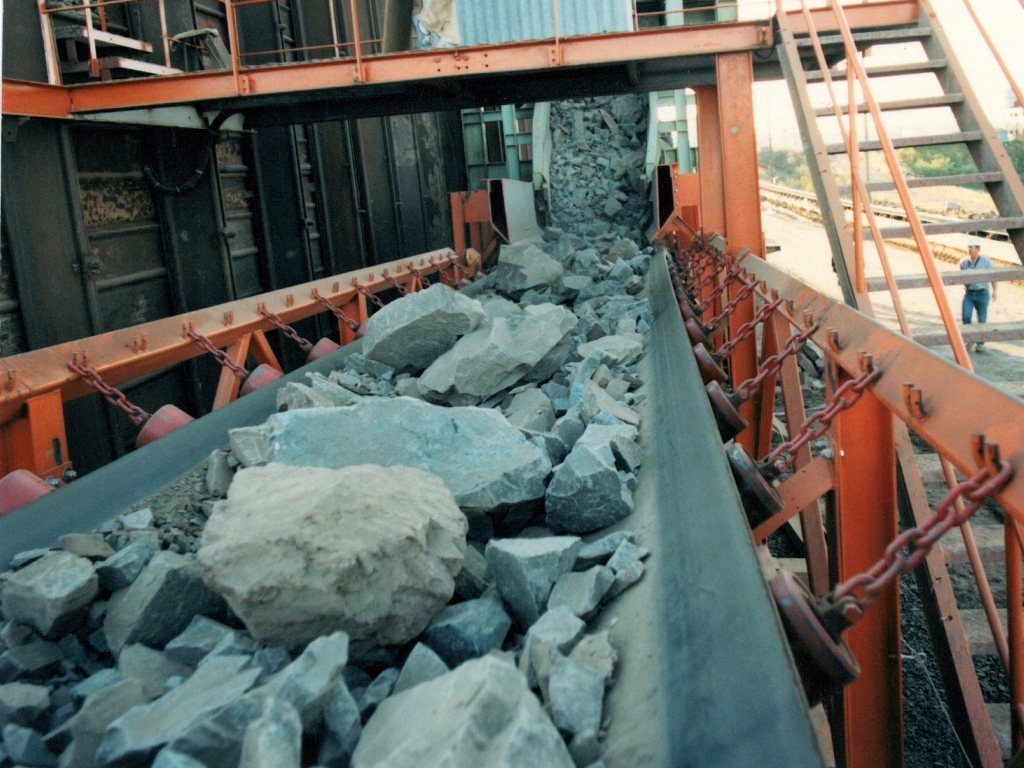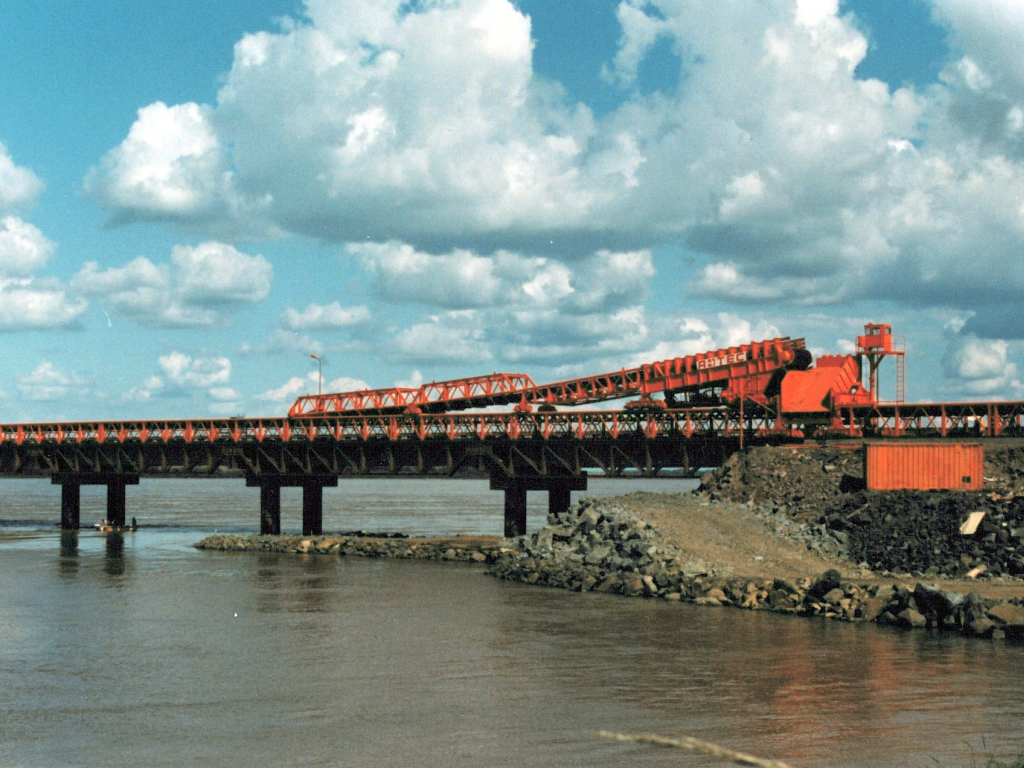Rotec Rocker
The feed rate of the Rotec Rocker is controlled by a variable speed optimizing a maximum rate of up to 2,500 tons per hour. Special emphasis was placed on supporting the belt and transitioning with the full load of material on it.
The tail pulley was a large diameter with extra strong bearing s consistent with our desire to standardize the bearings throughout the machine . When the belt slowed down, we used speed switches at the tail pulley to control the starting and stopping of the vibratory feeder. On the return belt, we found extra care was necessary to prevent rocks from entering the tail pulley area. Belt run-off switches provided additional control.
The tripper was constructed with serpentine action. Power for the tripper was developed using a power unit mounted on the tripper and variable speed was afforded into the driving wheels.
Slow speed, high torque, hydraulic motors were used to provide ample horsepower to the belt. With this system it was possible to start and stop the belt as often as desired with no limitations. By controlling the hydraulic pressure we were also able to control the maximum amount of tension that was to be applied to the belt. Tensioning of the belt could be done by one man in minutes (all electric over hydraulic).
Three power units were piped into the system which actually required only one to operate it at any one time. In operation we used two operating at half volume and the third was a backup.
In full operation the system requires two operators, one watching and controlling the loading area, one operating the tripper. The Rotec Rocker was designed to handle four ton rocks and operate at 1500 TPH. Rocks as much as seven tons have been able to pass through with ease.



